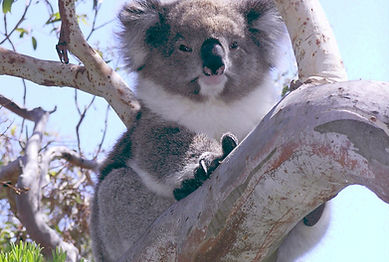Biodiversity Monitoring Services

Our Services

BMS are able to provide a wide range of services covering all aspects of biodiversity monitoring, biodiversity impact assessment, targeted species surveys, biodiversity planning advice and wildlife management studies.
We are a small, but highly mobile company and are capable of travelling to any area of Australia to undertake any project.
Biodiversity Monitoring
Recent years have seen a rise in the use of biodiversity monitoring as part of the on-going management of a project. BMS has been undertaking biodiversity monitoring for more than 20 years using a combination of detailed and targeted fauna surveys together with documentation of wildlife habitat characteristics. Monitoring is not limited to providing lists of species and describing communities, but should also use the data obtained from the field surveys to produce trends and trigger points by analysis.
Such an approach allows for adaptive management of any project and satisfies State and Federal requirements. BMS monitors the biodiversity of five mines and has developed a system for monitoring that satisfies regulatory requirements.


Impact Assessment
For more than 40 years BMS has taken a major role in impact assessment for a variety of developments within Australia. Impact assessment requires the collection of detailed data concerning fauna and associated habitats within a development area, as well as analysis of data and placing results into a regional context. Knowledge of State and Federal legislation and regulations are necessary and an ability to provide an objective picture of fauna use and the extent of any potential impacts. Principals of avoid, minimise and mitigation are followed to develop strategies for removal of native vegetation, as well as the establishment of biodiversity offset areas.
BMS has been involved in impact assessment for the following types of developments: roads; railways; transmission lines; pipelines; quarries; coal, sand, shale oil and mineral mining; forestry; residential development; film sets; airports; dams, water management; pollution controls; tourism and recreational activities.

Targeted Surveys
Targeted surveys for specific species form an important part of the work undertaken by BMS, particularly towards Federally Threatened, State Threatened and Biodiversity Offset Scheme (BOS) Credit species.
Apart from undertaking such surveys, BMS has been involved in providing management advice for single species such as Large-eared Pied Bat, Eastern Cave Bat, Large Bent-winged Bat, flying-fox, Ghost bat, Platypus, Hastings River Mouse, Koala, Water Rat, Squirrel Glider, Common Planigale, Sooty Owl, Swift Parrot, Regent Honeyeater, Blue Mountians Water-skink, Marble-headed Delma, Giant Dragonfly and Bathurst Copper Butterfly.
BMS have conducted expert reviews on potential Serious And Irreversible Impacts (SAII) to both cave roosting bat species, and Broad-headed Snake
Planning Advice and BOS/BAM Assessment
BMS prepare fauna and flora reports to satisfy the environmental requirements of residential development applications and small-scale vegetation clearing operations. We also provided input to a review of environmental factors for RMS remediation works. As of June 2018 we are accredited to provide assessment under the new Biodiversity Assessment Method (BAM) framework.
BMS are involved in much larger planning projects as well, including development of an overall bioregionalisation of eastern NSW and contribution to the NSW State of Environment 2000 report. We also provided input into the Management Plans for Sydney Olympic Park, Newington Armory, Rockdale Wetlands Corridor, Mutawintji National Park, Jenolan Caves, Munmorah SRA, Orchard Hills Department of Defence and the Queensland Kangaroo Management Plan. BMS also assisted in a negotiated agreement between the Central Land Council and North Flinders Mines for environmental management at Granites Goldfield.


Wildlife Management
Studies and advice on management of wildlife began in the 1980s with investigations into the movement of kangaroos and the impacts from drought.
Since then BMS has contributed to plans of management for kangaroos in Australia (including the development of the Code of Conduct for the Humane Shooting of Kangaroos), wallabies and Brush-tailed Possums in Tasmania, Koalas in Port Macquarie and Maclean Shire, Platypuses in Australia, wildlife in Botswana and pest birds at Olympic Park and landfill sites. BMS has also given advice on locations for BBC “Planet Earth” and research for the film “Drought”. Andrew has also been involved with research into kangaroo harvesting and the ethical euthanasia of Cane Toads.

Legislation Review
In his role as government liaison for the ECA NSW council, Andrew has reviewed and presented feedback on many legislative documents and guidelines at both the State and Federal level. These include, but are not limited to, the BC Act, guideline for applying the BAM at severely burnt sites, koala BAM survey guide, NSW Land Services Amendment Bill, BCF charge system/BAM-C changes, BC Act/BAM statutory reviews, EPBC Act statutory review and associated tools/workshops, BAM partial loss guidelines and Accredited Assessor Code of Conduct updates. He presented as key witness in the Parliamentary Inquiry into the integrity of the BOS, and at the Audit Office inquiry into the effectiveness of the BOS.
More recently Andrew has been involved In developing BAM survey guidelines for the Eastern pygmy-possum.